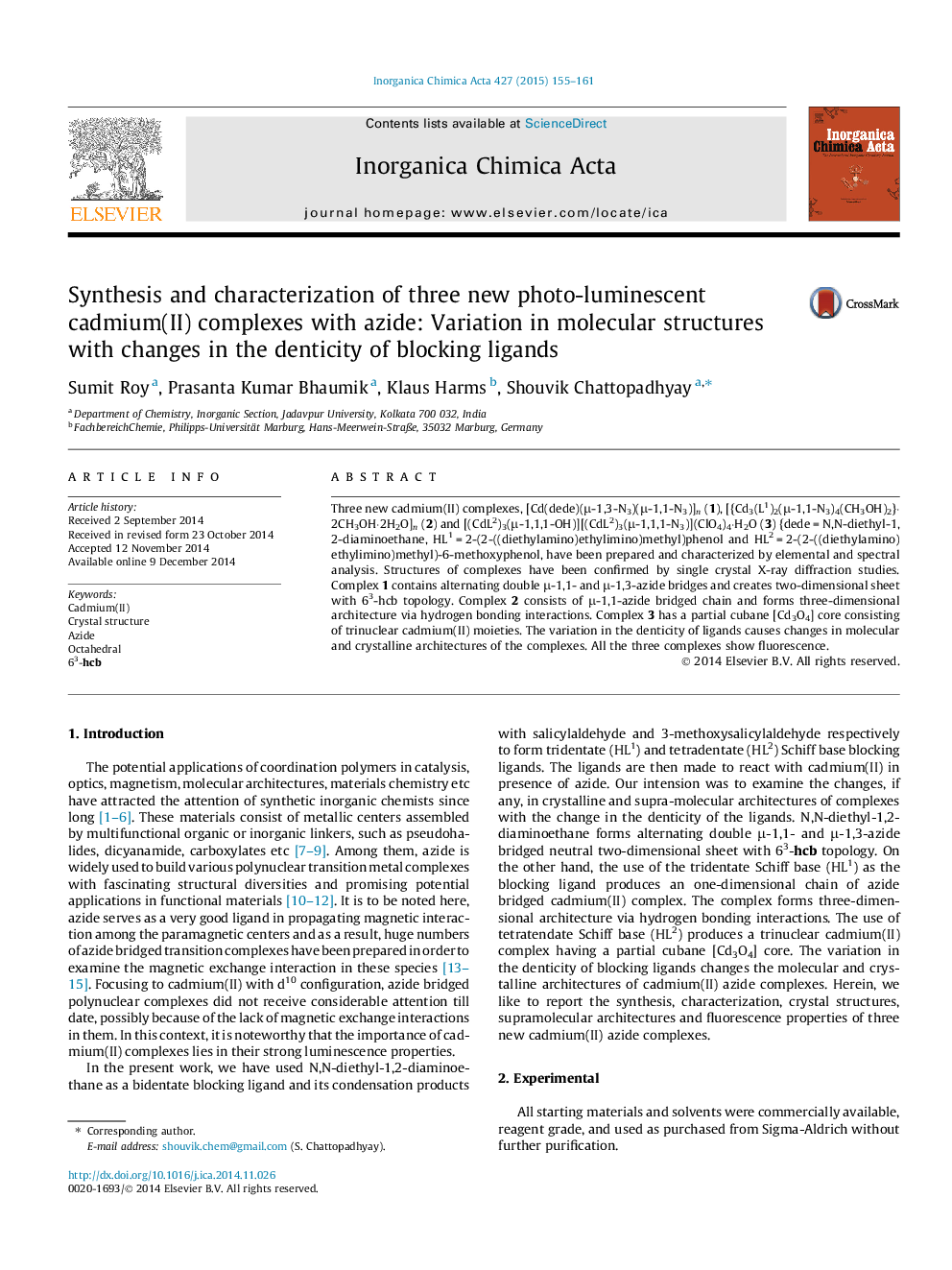| Article ID | Journal | Published Year | Pages | File Type |
|---|---|---|---|---|
| 1312101 | Inorganica Chimica Acta | 2015 | 7 Pages |
•Synthesis and characterization of three cadmium(II) azide complexes.•Presence of alternating double μ-1,1- and μ-1,3-azide bridges.•Formation of two-dimensional sheet with 63-hcb topology.•Formation of partial cubane [Cd3O4] core consisting of trinuclear cadmium(II) moieties.
Three new cadmium(II) complexes, [Cd(dede)(μ-1,3-N3)(μ-1,1-N3)]n (1), [{Cd3(L1)2(μ-1,1-N3)4(CH3OH)2}·2CH3OH·2H2O]n (2) and [(CdL2)3(μ-1,1,1-OH)][(CdL2)3(μ-1,1,1-N3)](ClO4)4·H2O (3) {dede = N,N-diethyl-1,2-diaminoethane, HL1 = 2-(2-((diethylamino)ethylimino)methyl)phenol and HL2 = 2-(2-((diethylamino)ethylimino)methyl)-6-methoxyphenol, have been prepared and characterized by elemental and spectral analysis. Structures of complexes have been confirmed by single crystal X-ray diffraction studies. Complex 1 contains alternating double μ-1,1- and μ-1,3-azide bridges and creates two-dimensional sheet with 63-hcb topology. Complex 2 consists of μ-1,1-azide bridged chain and forms three-dimensional architecture via hydrogen bonding interactions. Complex 3 has a partial cubane [Cd3O4] core consisting of trinuclear cadmium(II) moieties. The variation in the denticity of ligands causes changes in molecular and crystalline architectures of the complexes. All the three complexes show fluorescence.
Graphical abstractThree new photo-luminescent cadmium(II) azide complexes have been synthesized and characterized by single crystal X-ray diffraction analysis. Bidentate, tridentate and tetradentate ligands have been used as blocking ligands in preparing complexes. The structures of the complexes were drastically varied with the variation in the denticity of blocking ligands.Figure optionsDownload full-size imageDownload as PowerPoint slide
